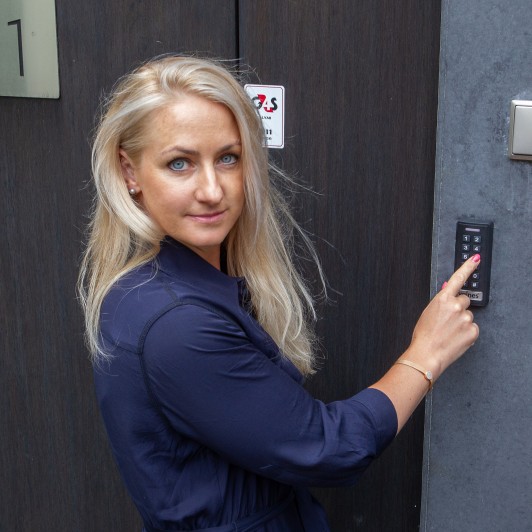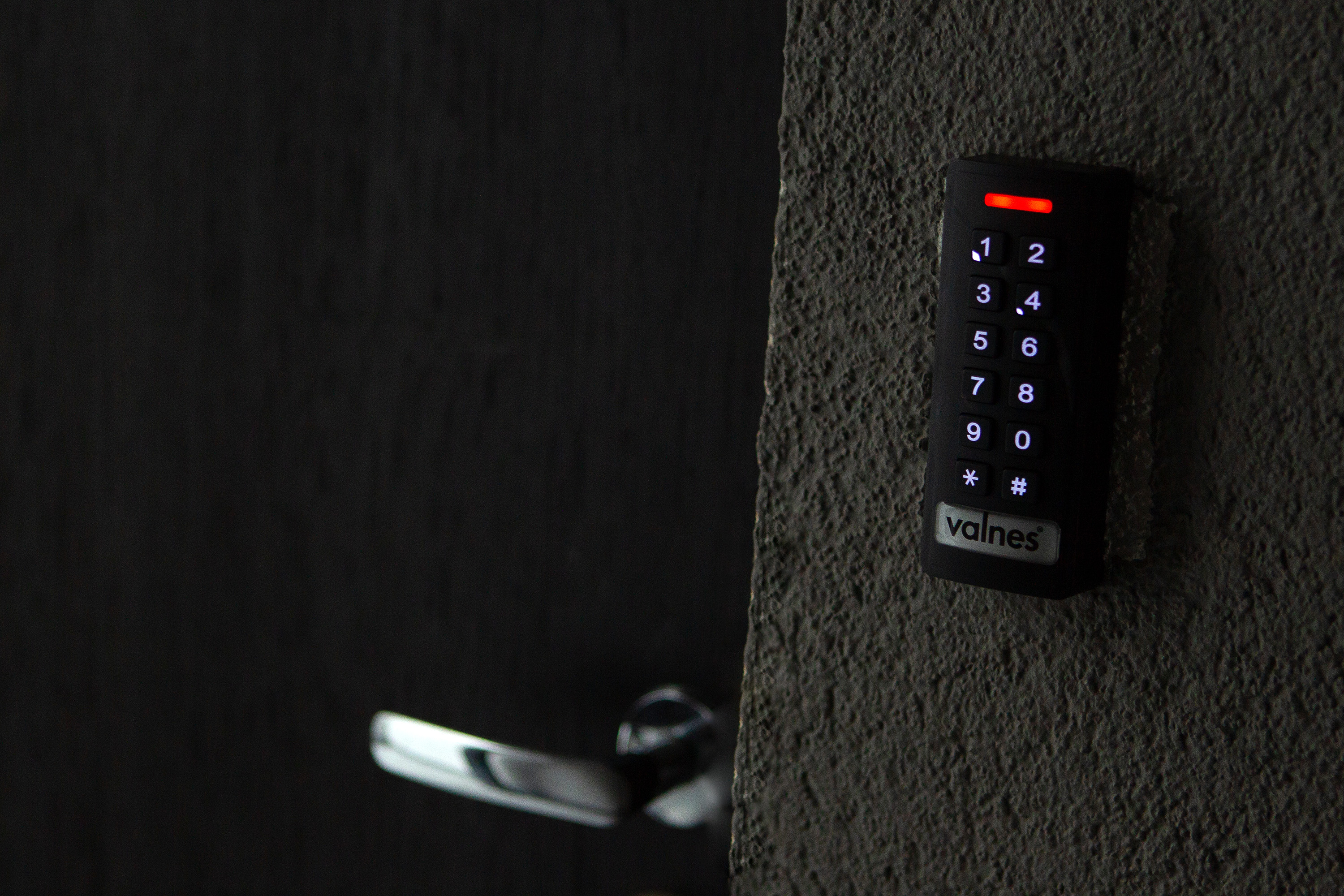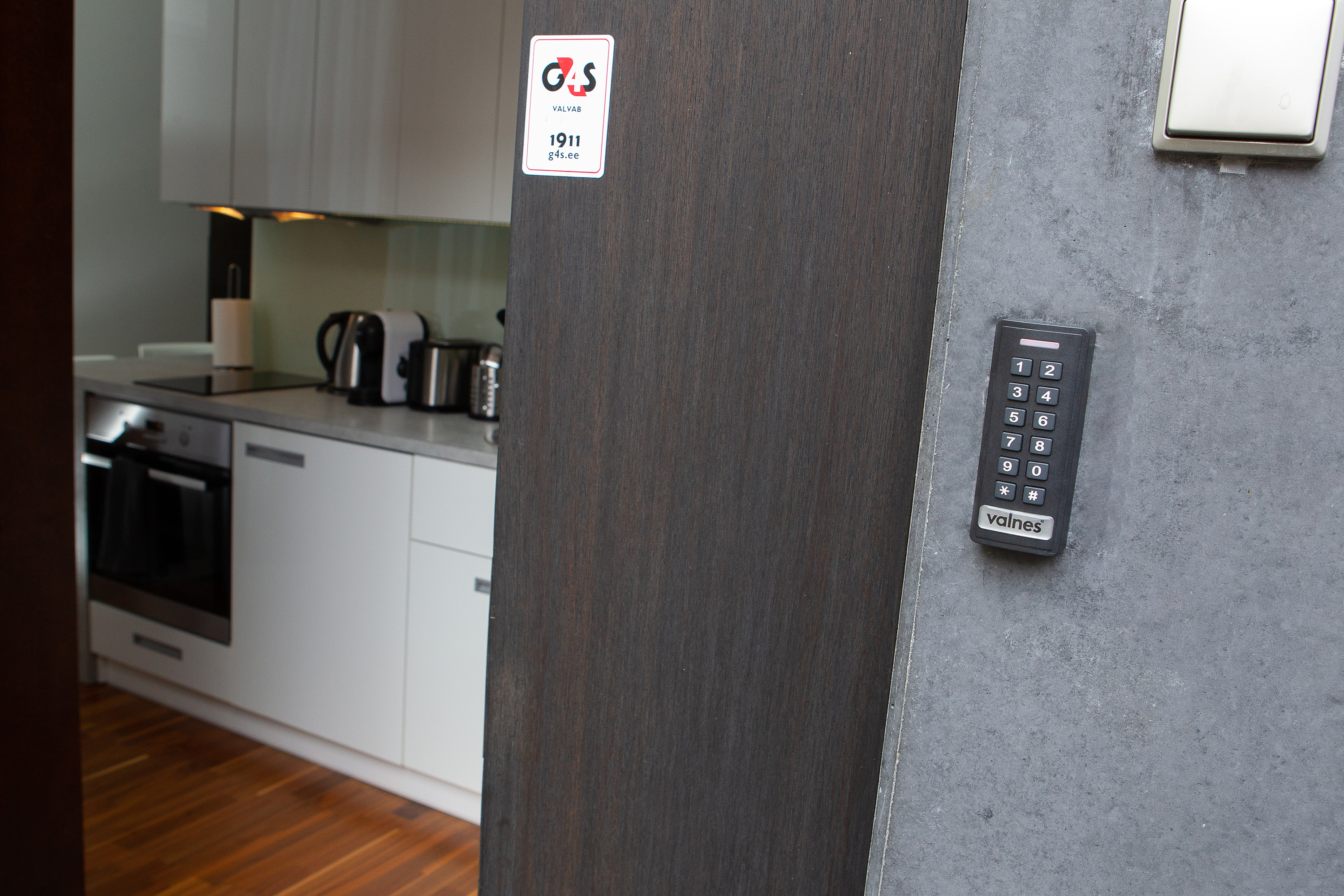Valnes WebLock brings hotel service to a whole new level
“I am the only employee at an apartment hotel with eight apartments who comes into direct contact with customers," says the CEO of Konrad Apartments hotelli, Aile Anja. Valnes WebLock enables the entirety of customer communication to be conducted at a distance; requiring about an hour per day. In the case of a traditional hotel reception with a receptionist, at least one person must be on site for 12 hours at the hotel, and this would mean having to hire two or more employees.
When it opened, the hotel gained great attention in the media, primarily due to its beautiful interior design, smart architectural solution, and novel concept. This hotel, with its outstandingly beautiful rooms, has no traditional reception area or ceremonial entrance; it is located in a courtyard next to the Tartu town square and the main street of the Old Town. Back in the day, the courtyard provided opportunities for loading goods, and included woodsheds and laundries.
Everything works on its own
The contemporary hotel modernised its service standards significantly by adopting the Valnes WebLock. The contactless service is seen in a whole new light considering the recent virus outbreak; however, the hotel was initially driven to search for an automated solution by the fact that customers usually do not adhere to the check-in times provided during booking. Now, customers can come and go without depending on anyone.
“The system works, because I have not had to communicate with customers on the topic of getting into their room for quite some time,” Anja confirms. She reasons that there would be problems if chips or key cards were used concurrently, since these tend to get lost. An e-mail with the door code, however, is usually not deleted throughout the stay. Hotel employees have their own access codes which open the doors of all rooms.
The process from booking until checking in and checking out is as follows:
- The customer makes a reservation on the hotel’s website or some online environment intermediating accommodation.
- Notification about a new reservation reaches the hotel’s employee.
- The employee checks the data provided in the reservation and the receipt of payment.
- If everything is in order, the employee generates a code comprised of numbers in the Valnes WebLock environment for opening the door to the room, and sends a welcome letter to the customer, which includes both the code and other important information related to the hotel.
- The code is valid throughout the stay. After the customer has checked out, the code becomes invalid.
According to Anja, the entire aforementioned process could be automated in full; however, in order to mitigate various risks, she has currently decided not to do so.
The night-time lighting solution enables one to read numbers on the code panel with ease, even in low light.
The implementation of such a solution was novel both for the specialists at Valnese, as well as the hotel manager. While the software side has operated essentially error-free right from the beginning, setbacks came from a truly unexpected direction instead. Namely, the lighting in the hotel courtyard and on the hotel stairs is cosily dim, which initially made it very difficult to see the numbers on the code panels that were put to use. The solution was to replace the panels for ones with a different lighting solution, and now, the numbers are easily readable.













